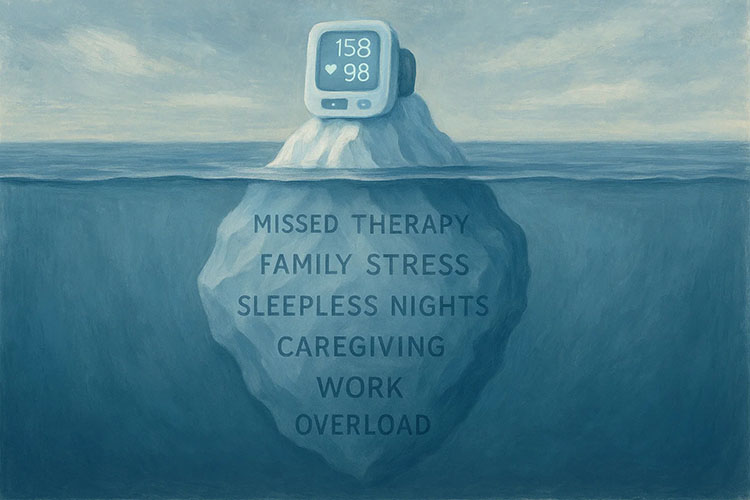Why Use RPM for Cardiovascular Patients?
According to the National Center for Health Statistics, 30.3 million adults in the US have been diagnosed with heart disease. Heart disease is one of the chronic diseases that affects Americans. It represents a significant burden on medical resources and personal finances. An innovation such as Remote Patient Monitoring is an excellent solution for cardiovascular patients living with this long-term condition.
What Is RPM And How Does It Work?
RPM uses a variety of wired and wireless devices to record a patient’s data. These may include blood pressure cuffs, weight scales, and glucometers. These are typically used after a patient has been discharged from hospital or in between regular clinic visits.
With RPM, patients can be monitored at home without the need to travel to the doctor’s office. It gives patients the ability to download their health data and share it with clinicians. Patients can then communicate with their doctor through video links to discuss results and make decisions together.
It enables valuable information about a patient’s condition to be stored in a database. Abnormal readings can be flagged up to a clinician so they can take action.
RPM can also provide access to educational information on managing conditions, allowing patients to take a more active role in their own well-being.
Why Is RPM Suited to Cardiovascular Patients?
Remote Patient Monitoring (RPM) works well for monitoring cardiovascular patients. It can show trends, abnormalities, and may prevent episodes from escalating. It plays a valuable role in improving health and saving money.
One of the key benefits of RPMcis the early detection. A great example is atrial fibrillation. Up to 6.1 million people in the US are affected by this condition, wherein patients have an irregular heart rate that can increase the risk of stroke, heart failure, and other cardiovascular diseases. RPM can help diagnose this condition early, with the result of fewer hospital admissions and lower mortality. This has been shown through non-randomized trials.
Another significant factor is the involvement of the patient in their own well-being. Studies have shown that greater patient engagement can significantly delay the progression of a chronic disease. When a patient takes a daily reading, reviews the data at their leisure and reviews it with a healthcare professional on a regular basis it causes a greater ownership. It helps patients to be more proactive. . Hypertension is another example. This condition can lead to cardiovascular diseases. It is estimated that by 2035, more than 42% of adults in the United States will suffer from hypertension.
RPM can reduce the incidence of hospital admissions, which can be caused by episodes of high blood pressure. A reduction of readmissions reduces costs for the patient, the healthcare industry and the country. Research demonstrates that RPM can lower both systolic and diastolic blood pressure considerably when compared to the patient simply monitoring themselves without any structure or regiment.
It’s also worth knowing that with some cardiovascular patients, a health emergency could suddenly occur if their condition deteriorates. With devices such as remote transmitters, the patient can be have their medication changed, see a doctor, visit urgent care or be admitted to hospital before an event such as a stroke occurs.
More About the Benefits for Patients and Clinicians
From a holistic point of view, RPM enables patients to manage their chronic condition more effectively with greater engagement.
Clinicians get a detailed and broader picture of a patient’s health using RPM. The Clinician, additionally, gets insight into how well their patients comply with their treatment program.They can offer greater motivation where needed.
They can create personalized care plans for their patients. Together, they can make decisions in response to the unique needs of the patient. Having patients do an effective healthcare plan and having providers know that their plans are being followed, produces better outcomes and greater sense of satisfaction for both the patient and the provider. RPM provides up-to-the-minute data so doctors can identify issues promptly. Often, this means that they can provide care before a patient needs to be admitted to the hospital.
Making a Huge Difference
The US has millions of people suffering with cardiovascular disease. RPM is a tool that makes a difference and provides better outcomes. RPM can help reduce hospital readmission and offers a lower mortality rate. It provides financial savings to the healthcare industry, to each medical practice that uses it, and to patients.
Medek RPM is a leader in the industry. Start a conversation with a Medek Representative today.






